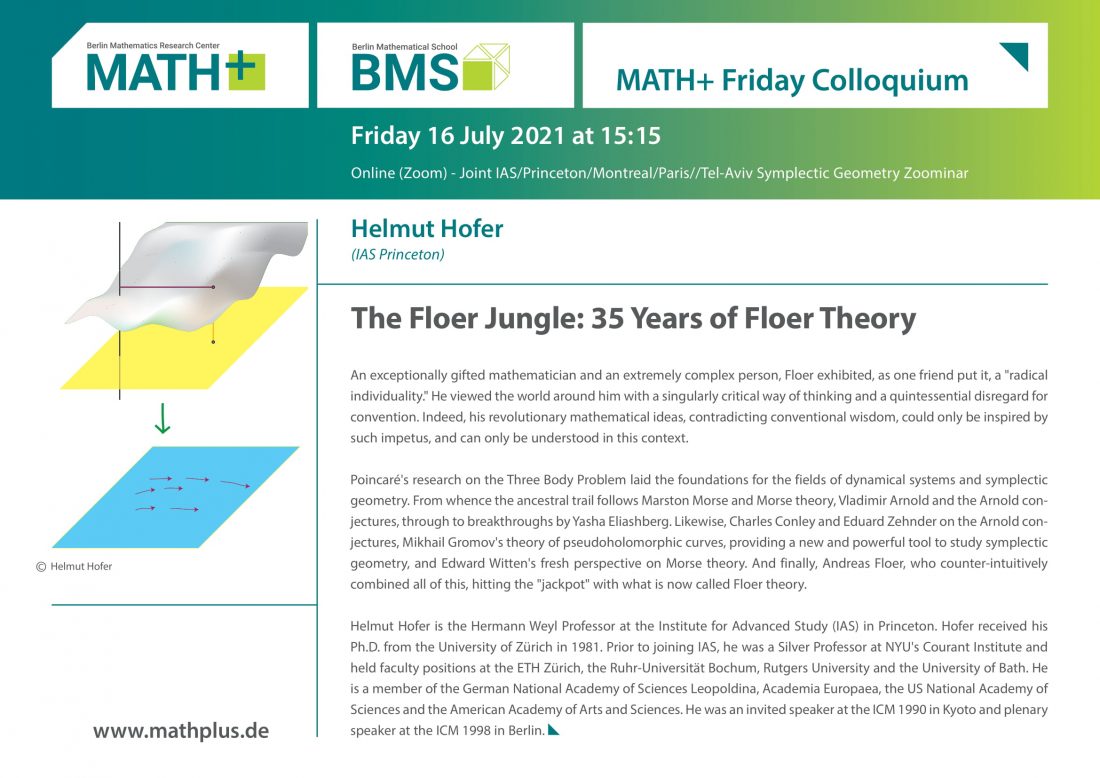16 July – Helmut Hofer: The Floer Jungle: 35 Years of Floer Theory (Joint IAS/Princeton/Montreal/Paris/Tel-Aviv Symplectic Geometry Zoominar)
An exceptionally gifted mathematician and an extremely complex person, Floer exhibited, as one friend put it, a “radical individuality.” He viewed the world around him with a singularly critical way of thinking and a quintessential disregard for convention. Indeed, his revolutionary mathematical ideas, contradicting conventional wisdom, could only be inspired by such impetus, and can only be understood in this context.
Poincaré’s research on the Three Body Problem laid the foundations for the fields of dynamical systems and symplectic geometry. From whence the ancestral trail follows Marston Morse and Morse theory, Vladimir Arnold and the Arnold conjectures, through to breakthroughs by Yasha Eliashberg. Likewise, Charles Conley and Eduard Zehnder on the Arnold conjectures, Mikhail Gromov’s theory of pseudoholomorphic curves, providing a new and powerful tool to study symplectic geometry, and Edward Witten’s fresh perspective on Morse theory. And finally, Andreas Floer, who counter-intuitively combined all of this, hitting the “jackpot” with what is now called Floer theory.
Helmut Hofer is the Hermann Weyl Professor at the Institute for Advanced Study (IAS) in Princeton. Hofer received his Ph.D. from the University of Zürich in 1981. Prior to joining IAS, he was a Silver Professor at NYU’s Courant Institute and held faculty positions at the ETH Zürich, the Ruhr-Universität Bochum, Rutgers University and the University of Bath. He is a member of the German National Academy of Sciences Leopoldina, Academia Europaea, the US National Academy of Sciences and the American Academy of Arts and Sciences. He was an invited speaker at the ICM 1990 in Kyoto and plenary speaker at the ICM 1998 in Berlin.
This talk will be a joint venture with the IAS/Princeton/Montreal/Paris/Tel-Aviv symplectic geometry zoominar.


